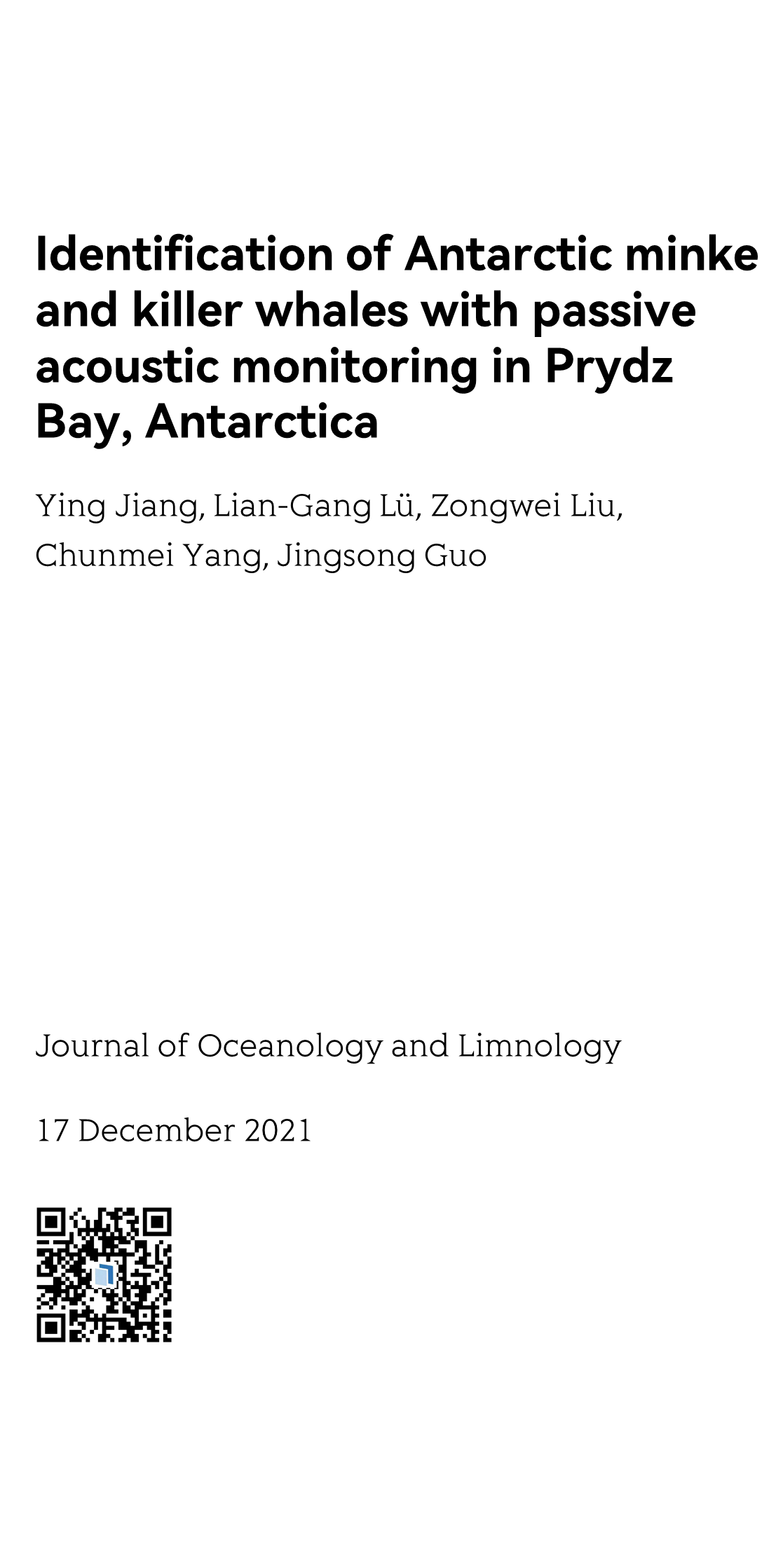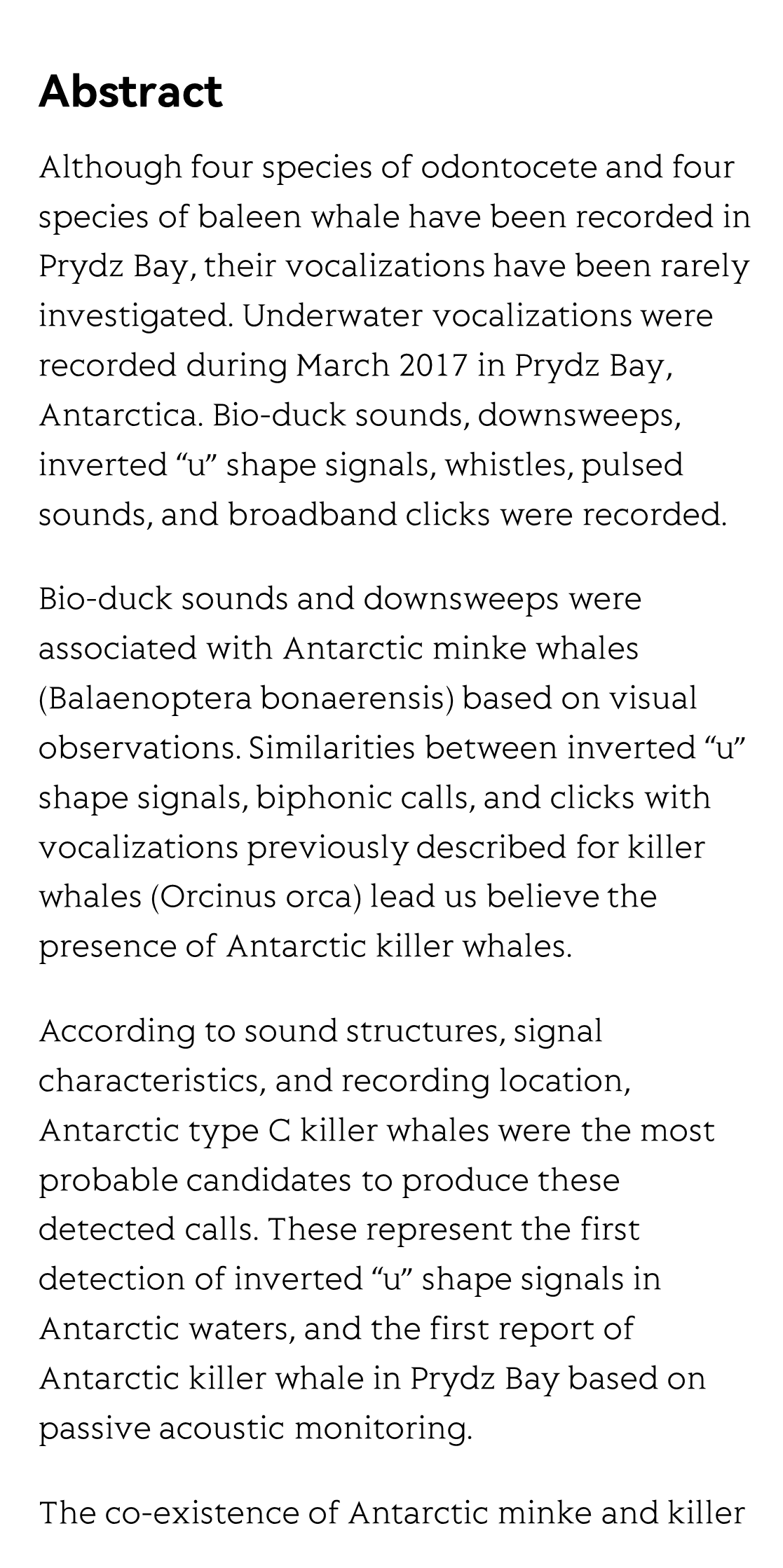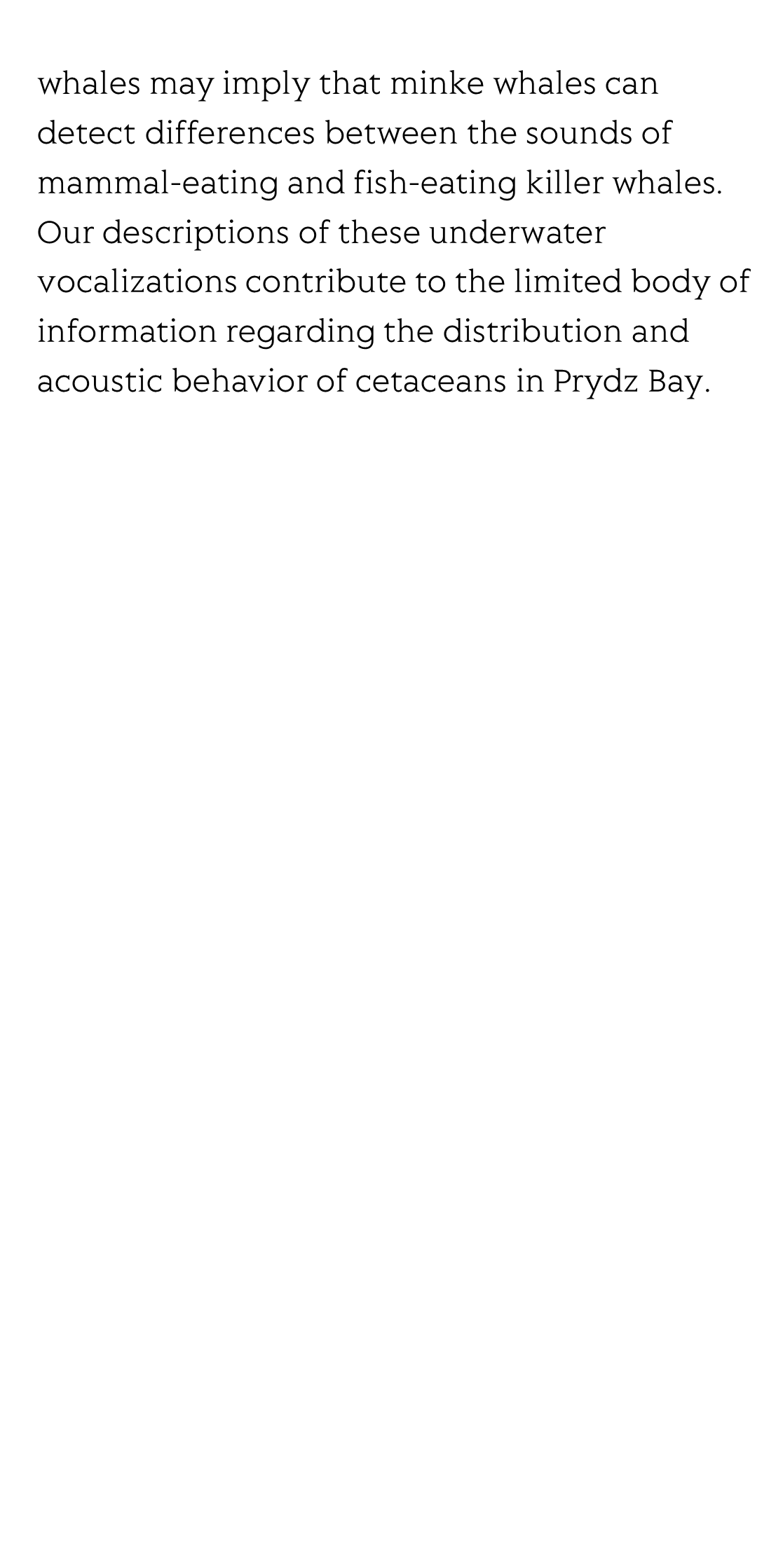(Peer-Reviewed) Identification of Antarctic minke and killer whales with passive acoustic monitoring in Prydz Bay, Antarctica
Ying Jiang 姜莹 ¹ ² ³, Lian-Gang Lü 吕连港 ¹ ² ³, Zongwei Liu 刘宗伟 ¹ ² ³, Chunmei Yang 杨春梅 ¹ ² ³, Jingsong Guo 郭景松 ¹ ² ³
¹ Firstinstitute of Oceanography, Ministry of Natural Resources, Qingdao, 266061, China
中国 青岛 自然资源部 第一海洋研究所
² Laboratory for Regional Oceanography and Numerical Modeling, Pilot National Laboratory for Marine Science and Technology (Qingdao), Qingdao, 266237, China
中国 青岛 青岛海洋科学与技术试点国家实验室 区域海洋动力学与数值模拟功能实验室
³ Key Laboratory of Marine Science and Numerical Modeling, Ministry of Natural Resources, Qingdao, 266061, China
中国 青岛 自然资源部 海洋环境科学与数值模拟重点实验室
Abstract
Although four species of odontocete and four species of baleen whale have been recorded in Prydz Bay, their vocalizations have been rarely investigated. Underwater vocalizations were recorded during March 2017 in Prydz Bay, Antarctica. Bio-duck sounds, downsweeps, inverted “u” shape signals, whistles, pulsed sounds, and broadband clicks were recorded.
Bio-duck sounds and downsweeps were associated with Antarctic minke whales (Balaenoptera bonaerensis) based on visual observations. Similarities between inverted “u” shape signals, biphonic calls, and clicks with vocalizations previously described for killer whales (Orcinus orca) lead us believe the presence of Antarctic killer whales.
According to sound structures, signal characteristics, and recording location, Antarctic type C killer whales were the most probable candidates to produce these detected calls. These represent the first detection of inverted “u” shape signals in Antarctic waters, and the first report of Antarctic killer whale in Prydz Bay based on passive acoustic monitoring.
The co-existence of Antarctic minke and killer whales may imply that minke whales can detect differences between the sounds of mammal-eating and fish-eating killer whales. Our descriptions of these underwater vocalizations contribute to the limited body of information regarding the distribution and acoustic behavior of cetaceans in Prydz Bay.
Meta-lens digital image correlation
Zhou Zhao, Xiaoyuan Liu, Yu Ji, Yukun Zhang, Yong Chen, Zhendong Luo, Yuzhou Song, Zihan Geng, Takuo Tanaka, Fei Qi, Shengxian Shi, Mu Ku Chen
Opto-Electronic Advances
2025-07-29
Broadband ultrasound generator over fiber-optic tip for in vivo emotional stress modulation
Jiapu Li, Xinghua Liu, Zhuohua Xiao, Shengjiang Yang, Zhanfei Li, Xin Gui, Meng Shen, He Jiang, Xuelei Fu, Yiming Wang, Song Gong, Tuan Guo, Zhengying Li
Opto-Electronic Science
2025-07-25





